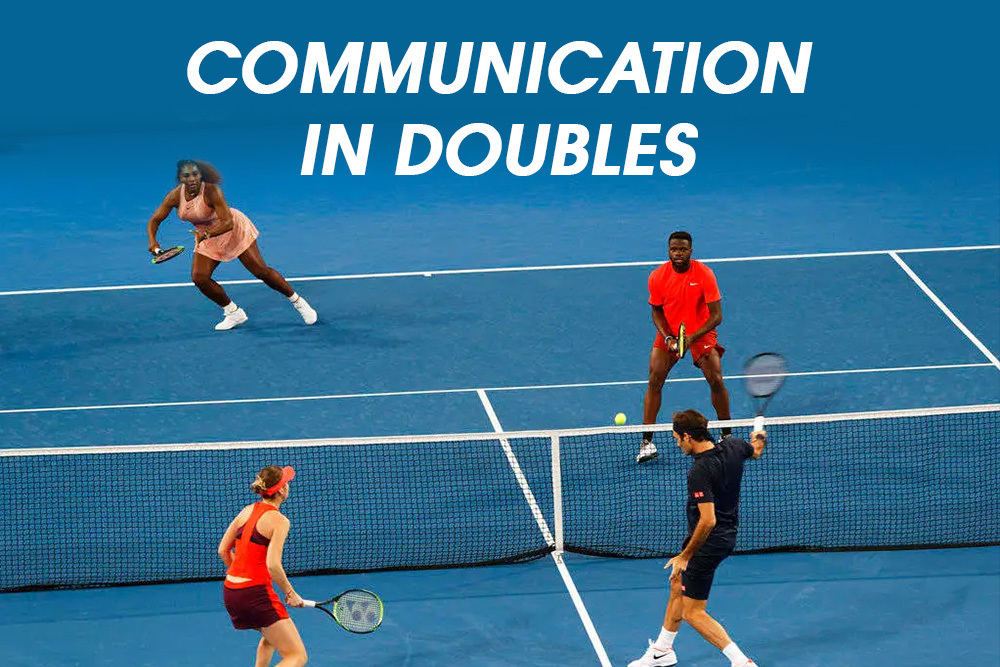Communication is a vital weapon in doubles tennis. Players tend to communicate verbally and with signals during the course of the game. This is extremely crucial for coordination and better implementation of their strategies. As two people play against another two people, this communication becomes a key point for doubles tennis.
The game plan or the strategy that needs to be communicated can be done either verbally or with signals. This is an efficient plan to optimize the potential of the players.
The verbal communication is usually about who is receiving the ball or who is to serve next. This is usually done in simple words like “you”, “me”, etc. This communication is done during the game and not between points. Hence, communicating in sentences is not efficient, and simple and quick words are used for faster communication.
Verbal Communication is simpler compared to signals used. Communication using signals is usually done between points or just before the player serves. These signals are shown by the player at the net to the playing serving from the baseline. The player at the baseline responds by saying yes or no. They are also used to indicate the movement of the player at the net.
Here are the signals used by the players while playing a doubles match.
Serve
- Body Serve: The player points the middle finger downwards to indicate a body serve. This is to tell the player at the baseline to aim directly at the body of the opponent player.
- Wide Serve: The partner at the net signals for a wide serve by pointing the little finger downwards.
- T-Serve: The player at the net indicated the partner by pointing the thumb finger outwards.
Movement of the player
- Stay: This signal is to show where the player at the net moves after the serve lands on the court. If the player wishes to stay in the same place he signals a closed fist.
- Go/Poach: This is to signal the partner that the player will be aiming for a full-on poach by going to the other side of the court to return the expected cross-court return. This is indicated by showing a palm faced towards the serving partner
- Look to Poach: This is to inform the partner that the player will be poaching based on the return of the opponent player. This is indicated by pinching all the fingers together.
Irrespective of the level of the game the players are playing, these hand signals are quite efficient to execute the exact game plan. Apart from execution these help in maintaining secrecy so that the opponents do not understand the strategy of the players. The players are advised to discuss these signals and use them during the practice session to avoid any kind of confusion.













Comments
Good information
Thanks